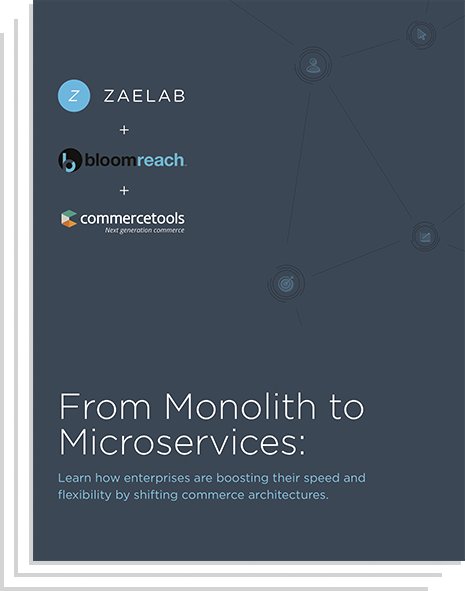From Monolith to Microservices
Learn how enterprises are boosting their speed and flexibility by shifting commerce architectures.
Innovation and speed are competitive differentiators. But how can enterprises deliver seamless digital experiences right now when monolith platforms are slowing business down?
Learn why enterprises are migrating onto microservices architectures – even after implementing a monolith platform – to increase speed and flexibility.
About The Whitepaper
When enterprises implemented ecommerce platforms in the early 2000s, the monolith architecture delivered. It was one, lightweight and unified application. The typical, and most essential features and functionalities were pre-packaged.
But today, responding to customer and market demands has become more complex and delivery expectations more urgent. We’re witnessing a shift in ecommerce; enterprises are turning to microservices to increase their agility and stay ahead of customer needs. But how can enterprises adopt microservices architectures – particularly if their ecommerce solution is currently being deployed via a legacy, monolith platform?
This whitepaper helps enterprises identify the right time to migrate, and shares the best monolith to microservices migration process to adopt.

Subscribe to Newsletter
Get insights about composable commerce, ecommerce solutions, and marketplaces delivered directly to your inbox. Subscribe to our monthly newsletter.
About Zaelab
Zaelab is a leading digital advisory and solutions company. Through continuous innovation, Zaelab removes the complexity and friction of digital platform implementation and operations. Zaelab give its clients best-in-class tools and insights so that they can deliver exceptional customer experiences.
About commercetools
commercetools is a next-generation software technology company that offers a true cloud commerce platform, providing the building blocks for the new digital commerce age. Its leading-edge API approach helps enterprises create brand value by empowering commerce teams to design unique and engaging digital commerce experiences everywhere – today and in the future. commercetools’ agile, componentized architecture improves profitability by significantly reducing development time and resources required to migrate to modern commerce technology and meet new customer demands. It is the perfect starting point for customized microservices.

